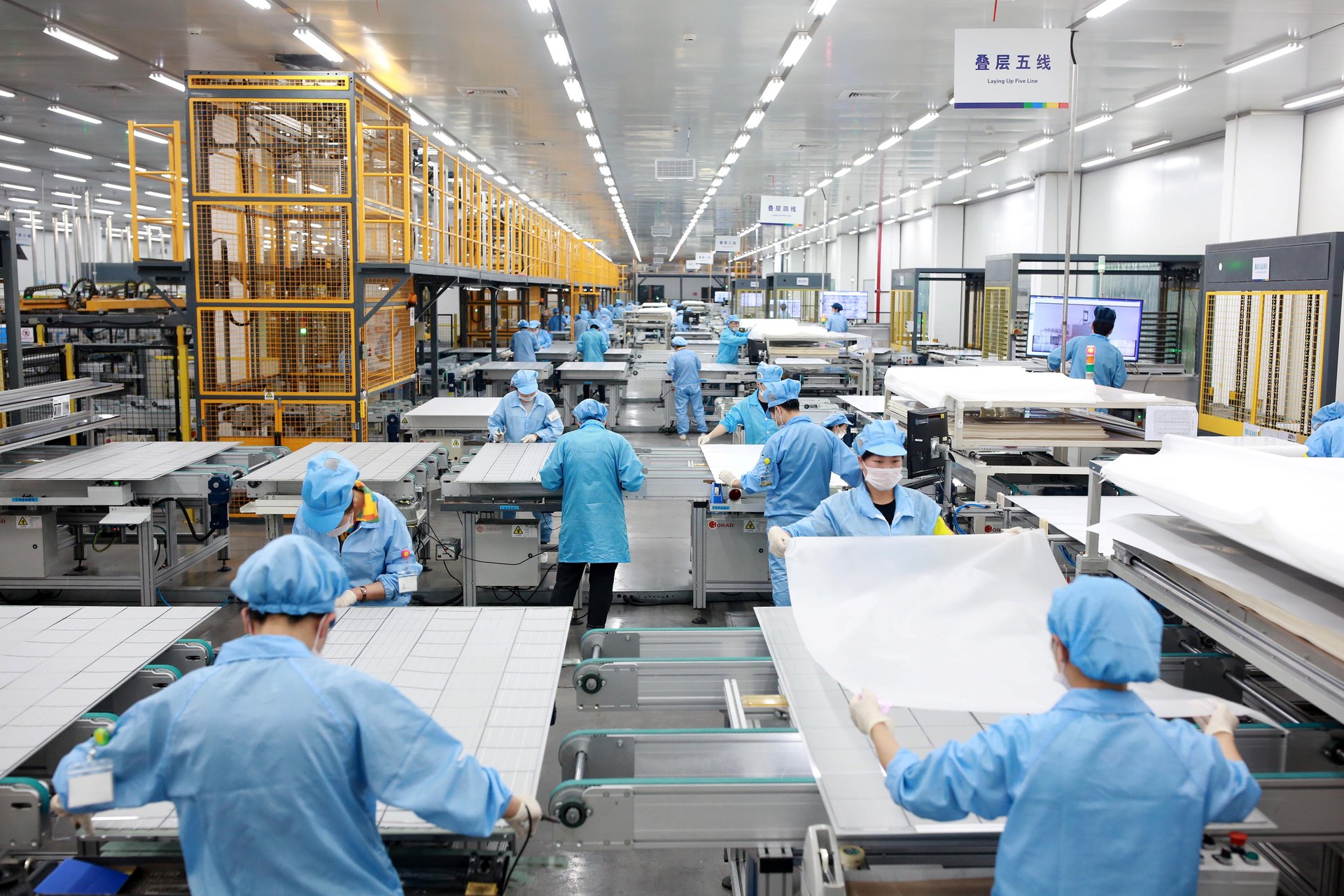The energy transition would cost 20% more without China, analysis says
Energy consultant Wood Mackenzie estimates that $6 trillion would be needed if Chinese clean tech was shunned

China dominates clean energy technologies. That makes it difficult—and costly—for the west to de-risk from China in products required for the transition to renewable energies.
Suggested Reading
Across clean tech supply chains for batteries, wind turbines, and solar panels, China makes up the overwhelming share of global manufacturing capacity and capability.
Related Content
With that vast production capacity has come economies of scale, and with it, vastly reduced costs. The cost of making solar panels and wind turbines in China are a fraction of what it would cost in the US, Europe, and India.
Just how much would it cost to completely decouple from made-in-China clean tech products? According to a new analysis by energy consultancy Wood Mackenzie, the global energy transition would cost an extra $6 trillion—on top of the $29 trillion worth of capital expenditures it estimates would be required through 2050 to reach net-zero carbon emissions. That equates to an additional 20% of the original energy transition bill.
Premium markets for non-Chinese supplies
$6 trillion is certainly a lot of money; the gross domestic products of India and the UK combined come in at just over that amount.
But is 20% an acceptable premium to pay for achieving the west’s strategic goals of reducing critical dependencies on China? The US and EU are not looking to completely rid themselves of China-made energy products; rather, they are seeking to diversify supplies and secure domestic supply chains. It would be reasonable to assume that the additional cost of a China-lite approach to clean energy technologies would cost far less than $6 trillion.
Meanwhile, industry players are already openly talking about convincing consumers to pay more for non-Chinese minerals needed to power products like electric vehicles. Several Canadian, German, and Australian mining companies are planning to command premium prices for key metals, arguing that reducing the geopolitical risks to China exposure is worth the higher price tag. Australian rare earth producer Hastings has also said there is an emerging “ex-China [premium] market developing.”
Costs and benefits
Beyond the direct cost increase associated with not-made-in-China clean energy technologies, another consideration that policymakers must weigh is the cost of deepening reliance on Chinese manufacturing and hollowing out domestic industrial bases.
The dire straits of the European solar industry is an illustrative example: while the EU achieved record solar installations last year, its own solar panel manufacturers risk going out of business as cheap Chinese solar imports flood in.
“On one level, some Europeans welcome this,” writes Matt Turpin, a visiting fellow at the Hoover Institution specializing in US policy towards China. “It allows them to transition to renewables even more cheaply, but it is creating a set of dependencies in the energy sector that Europeans should know better than to fall for. The impact of these artificially cheap panels and other green tech components will be the destruction of Europe’s own green tech manufacturing industry.”
How to weigh the cost and benefits of dependence on China for cheaper products versus the need to strengthen the west’s industrial capacities is a thorny question at the heart of de-risking debates.